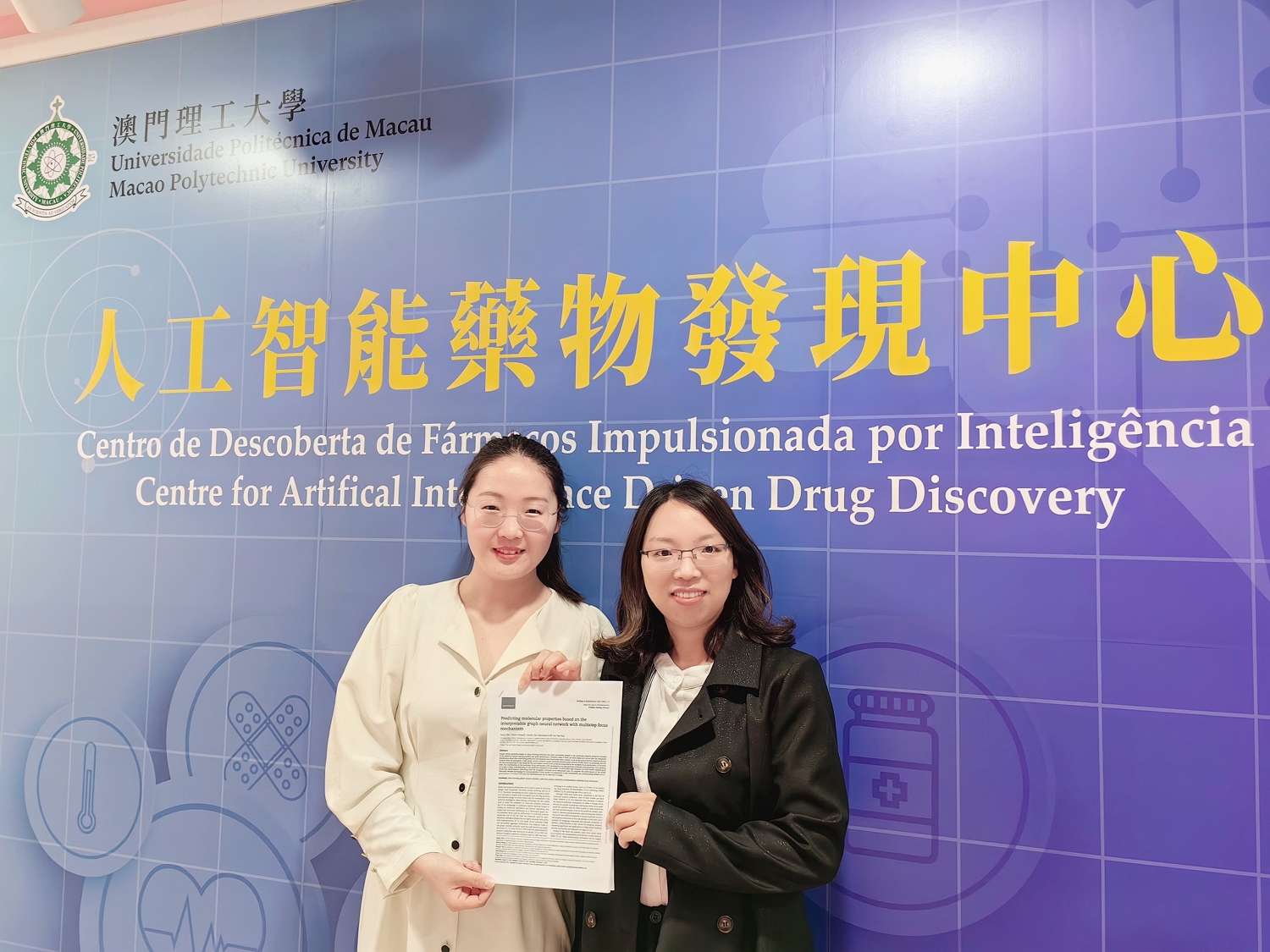Highlights
Academic work of MPU published in top bioinformatics journal
The paper entitled "Predicting molecular properties based on the interpretable graph neural network with multistep focus mechanism" has been published by the top international bioinformatics journal, Briefings in Bioinformatics 2023, 24(1), 1-9, bbac534. The work the paper is based on was led by Professor Liu Huanxiang, Academic Leader, Centre for Artificial Intelligence Driven Drug Discovery, Faculty of Applied Sciences, Macao Polytechnic University, with Ms. Tian Yanan, a first-year doctoral student at Macao Polytechnic University, as the first author. The journal is No. 1 in the field of Mathematical and Computational Biology, with an impact factor of 13.994.
Drug discovery is essentially the iterative optimization process of compound properties, resulting in safe and effective drugs. Therefore, accurate prediction of compound properties is crucial for new drug design. In recent years, deep learning technology has been widely used in the fields of molecular property prediction and molecular generation due to its powerful learning ability. Yet, most of the current molecular property prediction methods based on deep learning are like black boxes, which cannot provide clear guidance for drug design and molecular optimization. To address this issue, this study proposes a novel interpretable graph neural network model for molecular property prediction. The model uses a molecular graph as the input representation and a message-passing neural network as the basic architecture, and improves the predictive model performance & model interpretability by embedding a multi-step focus mechanism. A large number of experimental results on 8 benchmark sets show that the IFGN model has superior prediction performance in both classification tasks and regression tasks. Visualization results also prove that IFGN can successfully identify key nodes in molecules that are closely related to predicted properties, thereby increasing model interpretability. In addition, in order to facilitate potential academia-industry collaboration, the scientific research team has also created related websites for easy adoption from drug developers. The full text of the journal article is available at: https://academic.oup.com/bib/article-abstract/24/1/bbac534/6918752?redirectedFrom=fulltext。
The Centre for Artificial Intelligence Driven Drug Discovery of Macao Polytechnic University is guided by the strategic needs of the country and Macao in biomedicine, relying on the solid academic advantages of the Faculty of Applied Sciences and the Faculty of Health Sciences and Sports, Macao Polytechnic University. The Centre is committed to the cultivation of interdisciplinary researchers who apply artificial intelligence technology to develop new drugs, with determination in cross-integration of artificial intelligence technology with drug screening, drug design, and drug optimization. In-depth exchanges and cooperation with biomedical companies is also actively promoted for the translational development of its scientific outputs.




